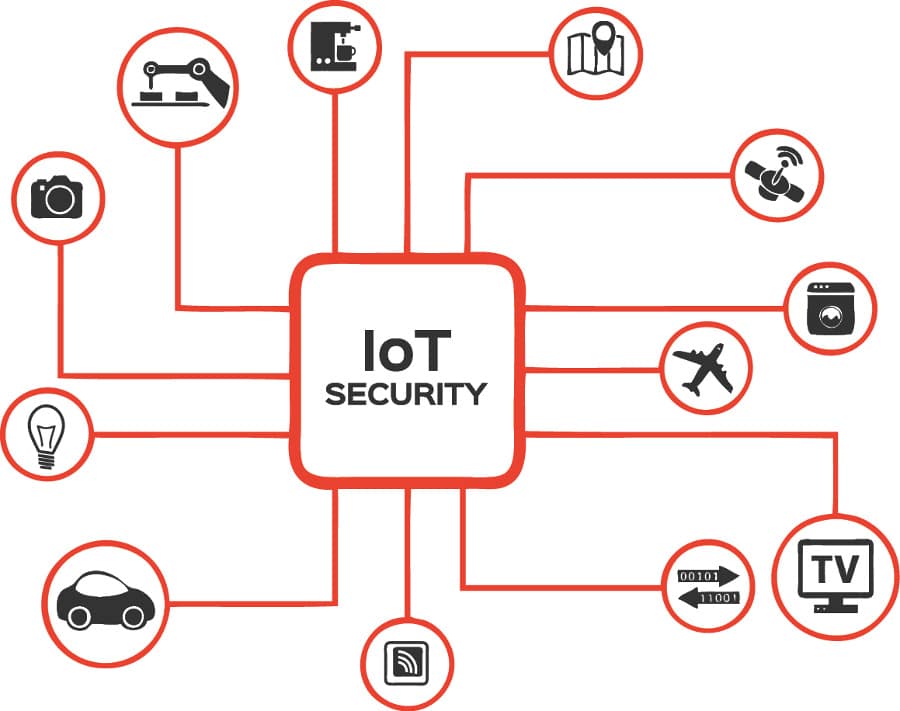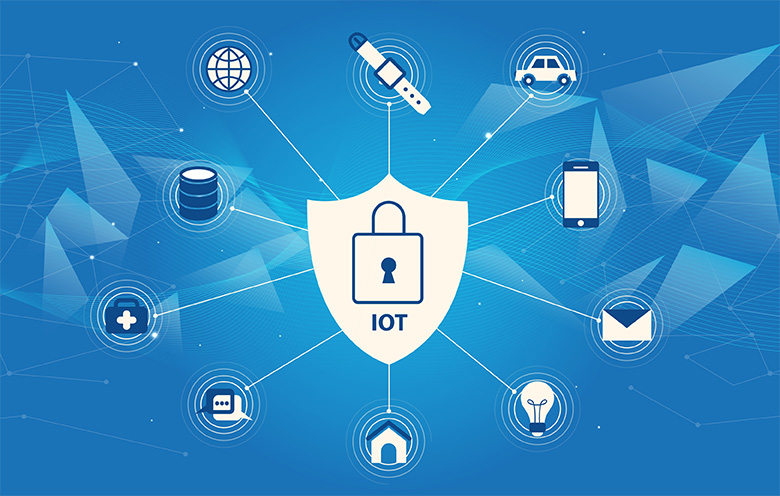Understanding the IoT Cybersecurity Threat Landscape
The increasing reliance on Internet of Things (IoT) devices has created a vast attack surface for cyber threats. As SaaS startups continue to integrate IoT devices into their operations, the risk of security breaches and data compromise grows exponentially. In fact, a recent study revealed that 70% of IoT devices are vulnerable to medium- or high-severity attacks. This alarming statistic highlights the need for SaaS startups to prioritize IoT cybersecurity and take proactive measures to protect their devices and data.
IoT devices, such as smart sensors, cameras, and industrial control systems, are particularly vulnerable to attacks due to their limited processing power, memory, and security features. Hackers can exploit these weaknesses to gain unauthorized access to sensitive data, disrupt business operations, or even compromise physical safety. For instance, a compromised IoT device can be used as a botnet to launch distributed denial-of-service (DDoS) attacks, causing significant financial losses and reputational damage.
The consequences of an IoT security breach can be severe for SaaS startups. A single incident can lead to data theft, intellectual property loss, and regulatory non-compliance, ultimately resulting in financial penalties, reputational damage, and loss of customer trust. Moreover, the increasing number of IoT devices connected to the internet has created a complex threat landscape, making it challenging for SaaS startups to detect and respond to security incidents in a timely manner.
Given the growing concern of IoT device security breaches, it is essential for SaaS startups to understand the types of IoT devices that are most vulnerable to attacks and the common threats they face. By acknowledging these risks, SaaS startups can take the first step towards implementing robust security measures to protect their IoT devices and data. In the next section, we will explore actionable tips and best practices for securing IoT devices, including encryption, secure boot mechanisms, and regular software updates.
How to Implement Robust Security Measures for IoT Devices
Implementing robust security measures is crucial for SaaS startups to protect their IoT devices from cyber threats. One of the most effective ways to secure IoT devices is through encryption. Encryption ensures that data transmitted between devices and the cloud is protected from unauthorized access. SaaS startups can use encryption protocols such as Transport Layer Security (TLS) and Advanced Encryption Standard (AES) to secure their IoT devices.
Another critical security measure is secure boot mechanisms. Secure boot mechanisms ensure that only authorized firmware can run on IoT devices, preventing malware and other unauthorized software from executing. SaaS startups can implement secure boot mechanisms using technologies such as Unified Extensible Firmware Interface (UEFI) and Trusted Platform Module (TPM).
Regular software updates are also essential for maintaining the security of IoT devices. SaaS startups should ensure that their IoT devices receive regular software updates to patch vulnerabilities and fix security flaws. This can be achieved through over-the-air (OTA) updates or manual updates using secure protocols such as Secure Sockets Layer (SSL) and TLS.
Real-world examples of companies that have successfully implemented these security measures include Amazon, which uses encryption and secure boot mechanisms to secure its IoT devices, and Google, which uses regular software updates to patch vulnerabilities in its IoT devices. By following these best practices, SaaS startups can significantly improve the security of their IoT devices and protect themselves from cyber threats.
In addition to these security measures, SaaS startups should also consider implementing a defense-in-depth approach to IoT security. This involves implementing multiple layers of security controls, including network segmentation, access controls, and incident response plans. By taking a proactive approach to IoT security, SaaS startups can minimize the risk of security breaches and protect their IoT devices from cyber threats.
The Importance of Network Segmentation in IoT Security
Network segmentation is a critical security measure for SaaS startups to prevent lateral movement in the event of an IoT device breach. By segmenting the network, SaaS startups can isolate IoT devices from the rest of the network, reducing the attack surface and preventing hackers from moving laterally across the network.
There are several ways to implement network segmentation, including Virtual Local Area Networks (VLANs), Virtual Private Networks (VPNs), and firewalls. VLANs allow SaaS startups to segment their network into smaller, isolated segments, each with its own set of access controls and security measures. VPNs provide an additional layer of security by encrypting data transmitted between IoT devices and the cloud. Firewalls can be used to block unauthorized traffic and prevent hackers from accessing the network.
For example, a SaaS startup can use VLANs to segment its IoT devices into separate networks for different departments or functions. This way, if an IoT device in one department is compromised, the hacker will not be able to move laterally to other departments. Similarly, VPNs can be used to encrypt data transmitted between IoT devices and the cloud, preventing hackers from intercepting sensitive data.
Implementing network segmentation requires careful planning and execution. SaaS startups should start by identifying the different types of IoT devices on their network and the data they transmit. They should then determine the best way to segment their network, based on the specific security needs of each device and the data it transmits. Finally, they should implement the necessary security measures, such as VLANs, VPNs, and firewalls, to prevent unauthorized access and lateral movement.
By implementing network segmentation, SaaS startups can significantly improve the security of their IoT devices and prevent hackers from moving laterally across the network. This is especially important for SaaS startups that handle sensitive data, such as financial information or personal identifiable information (PII). By prioritizing network segmentation, SaaS startups can protect their IoT devices and data from cyber threats and maintain the trust of their customers.
Securing IoT Data: A Guide to Encryption and Access Control
Securing IoT data is a critical aspect of SaaS startup cybersecurity for IoT devices. With the increasing amount of data being generated by IoT devices, it is essential to ensure that this data is protected from unauthorized access and breaches. One of the most effective ways to secure IoT data is through encryption.
Encryption involves converting plaintext data into unreadable ciphertext, making it difficult for hackers to intercept and read the data. There are several types of encryption methods available, including symmetric key encryption, asymmetric key encryption, and hash functions. Symmetric key encryption uses the same key for both encryption and decryption, while asymmetric key encryption uses a pair of keys, one for encryption and another for decryption.
Access control is another critical aspect of securing IoT data. Access control involves controlling who has access to the data and what actions they can perform on the data. This can be achieved through authentication and authorization mechanisms, such as username and password combinations, biometric authentication, and role-based access control.
For example, a SaaS startup can use encryption to protect data transmitted between IoT devices and the cloud. They can also implement access controls, such as authentication and authorization, to ensure that only authorized personnel have access to the data. Additionally, they can use secure protocols, such as HTTPS and SFTP, to protect data in transit.
Some popular encryption methods for IoT data include Advanced Encryption Standard (AES), Elliptic Curve Cryptography (ECC), and Secure Sockets Layer/Transport Layer Security (SSL/TLS). These methods provide strong encryption and are widely supported by most IoT devices and platforms.
In addition to encryption and access control, SaaS startups should also consider implementing data loss prevention (DLP) measures to protect sensitive data. DLP involves monitoring and controlling data in motion, in use, and at rest, to prevent unauthorized access and breaches.
Real-World Examples of IoT Security Solutions for SaaS Startups
There are several IoT security solutions available that SaaS startups can use to protect their IoT devices and data. Here are some real-world examples of IoT security solutions that SaaS startups can use:
AWS IoT Core is a managed cloud service that allows SaaS startups to securely connect and manage IoT devices. It provides features such as device registration, data processing, and analytics, as well as security features such as encryption and access control.
Google Cloud IoT Core is another managed cloud service that provides a secure and scalable way for SaaS startups to connect and manage IoT devices. It provides features such as device registration, data processing, and analytics, as well as security features such as encryption and access control.
Microsoft Azure IoT Hub is a cloud-based IoT platform that provides a secure and scalable way for SaaS startups to connect and manage IoT devices. It provides features such as device registration, data processing, and analytics, as well as security features such as encryption and access control.
These IoT security solutions provide a range of benefits for SaaS startups, including improved security, scalability, and analytics. By using these solutions, SaaS startups can protect their IoT devices and data from cyber threats and improve their overall IoT security posture.
In addition to these IoT security solutions, SaaS startups can also use other security measures such as firewalls, intrusion detection systems, and encryption to protect their IoT devices and data. By using a combination of these security measures, SaaS startups can provide a robust and secure IoT security solution for their customers.
When selecting an IoT security solution, SaaS startups should consider several factors, including the type of IoT devices they are using, the type of data they are collecting, and the level of security they need to provide. They should also consider the scalability and flexibility of the solution, as well as its ease of use and integration with other systems.
Best Practices for IoT Device Management and Monitoring
Effective management and monitoring of IoT devices is crucial for SaaS startups to ensure the security and integrity of their IoT ecosystem. Here are some best practices for IoT device management and monitoring:
Device Inventory Management: SaaS startups should maintain a comprehensive inventory of all IoT devices connected to their network. This includes tracking device serial numbers, firmware versions, and configuration settings.
Firmware Updates: Regular firmware updates are essential to ensure that IoT devices have the latest security patches and features. SaaS startups should implement a process for automatically updating firmware on all IoT devices.
Anomaly Detection: SaaS startups should implement anomaly detection mechanisms to identify unusual behavior on IoT devices. This can include monitoring device activity, network traffic, and system logs.
Monitoring and Logging: SaaS startups should implement monitoring and logging mechanisms to track IoT device activity and system performance. This can include using tools such as Splunk, ELK, or Sumo Logic.
Incident Response: SaaS startups should have an incident response plan in place to quickly respond to security incidents involving IoT devices. This includes having a team of experts who can quickly respond to incidents and contain the damage.
By following these best practices, SaaS startups can effectively manage and monitor their IoT devices, reducing the risk of security breaches and improving the overall security posture of their IoT ecosystem.
In addition to these best practices, SaaS startups should also consider implementing a device management platform to streamline IoT device management and monitoring. These platforms can provide a centralized view of all IoT devices, automate firmware updates, and provide real-time monitoring and logging.
Some popular device management platforms for IoT devices include AWS IoT Device Management, Google Cloud IoT Core, and Microsoft Azure IoT Hub. These platforms provide a range of features and tools to help SaaS startups manage and monitor their IoT devices, including device inventory management, firmware updates, and anomaly detection.
The Role of Artificial Intelligence and Machine Learning in IoT Security
Artificial intelligence (AI) and machine learning (ML) are playing an increasingly important role in enhancing IoT security for SaaS startups. These technologies can help detect and respond to security threats in real-time, improving the overall security posture of IoT devices.
Anomaly detection is one of the key applications of AI and ML in IoT security. By analyzing patterns of normal behavior, AI-powered systems can identify unusual activity that may indicate a security threat. This allows SaaS startups to quickly respond to potential security incidents and prevent them from escalating.
Predictive analytics is another area where AI and ML can be applied to IoT security. By analyzing data from IoT devices, AI-powered systems can predict potential security threats and provide recommendations for mitigating them. This can help SaaS startups stay ahead of emerging threats and improve their overall security posture.
Incident response is also an area where AI and ML can be applied to IoT security. By automating incident response processes, AI-powered systems can help SaaS startups quickly respond to security incidents and minimize the impact of a breach.
Some popular AI and ML-powered IoT security solutions for SaaS startups include IBM Watson IoT, Microsoft Azure Machine Learning, and Google Cloud AI Platform. These solutions provide a range of features and tools to help SaaS startups improve their IoT security posture, including anomaly detection, predictive analytics, and incident response.
By leveraging AI and ML, SaaS startups can improve their IoT security posture and stay ahead of emerging threats. These technologies can help detect and respond to security threats in real-time, improving the overall security of IoT devices and preventing security breaches.
The Role of Artificial Intelligence and Machine Learning in IoT Security
Artificial intelligence (AI) and machine learning (ML) are playing an increasingly important role in enhancing IoT security for SaaS startups. These technologies can help detect and respond to security threats in real-time, improving the overall security posture of IoT devices.
Anomaly detection is one of the key applications of AI and ML in IoT security. By analyzing patterns of normal behavior, AI-powered systems can identify unusual activity that may indicate a security threat. This allows SaaS startups to quickly respond to potential security incidents and prevent them from escalating.
Predictive analytics is another area where AI and ML can be applied to IoT security. By analyzing data from IoT devices, AI-powered systems can predict potential security threats and provide recommendations for mitigating them. This can help SaaS startups stay ahead of emerging threats and improve their overall security posture.
Incident response is also an area where AI and ML can be applied to IoT security. By automating incident response processes, AI-powered systems can help SaaS startups quickly respond to security incidents and minimize the impact of a breach.
Some popular AI and ML-powered IoT security solutions for SaaS startups include IBM Watson IoT, Microsoft Azure Machine Learning, and Google Cloud AI Platform. These solutions provide a range of features and tools to help SaaS startups improve their IoT security posture, including anomaly detection, predictive analytics, and incident response.
By leveraging AI and ML, SaaS startups can improve their IoT security posture and stay ahead of emerging threats. These technologies can help detect and respond to security threats in real-time, improving the overall security of IoT devices and preventing security breaches.






